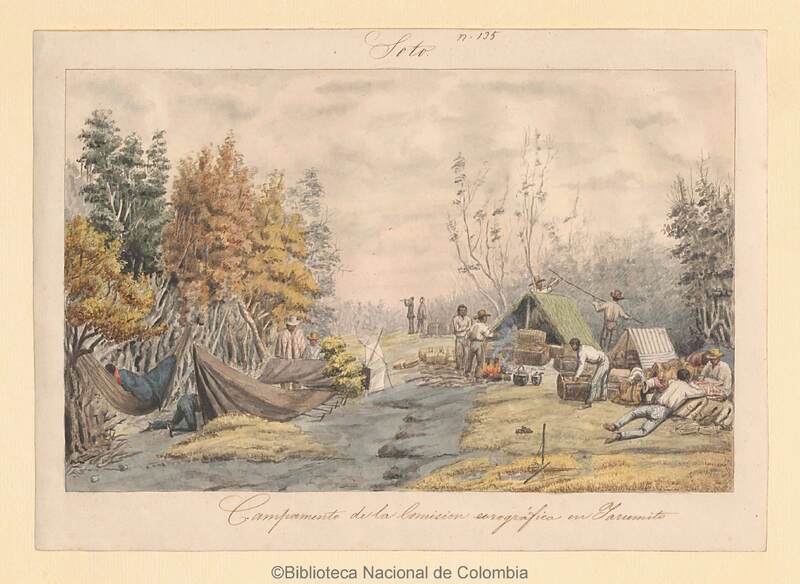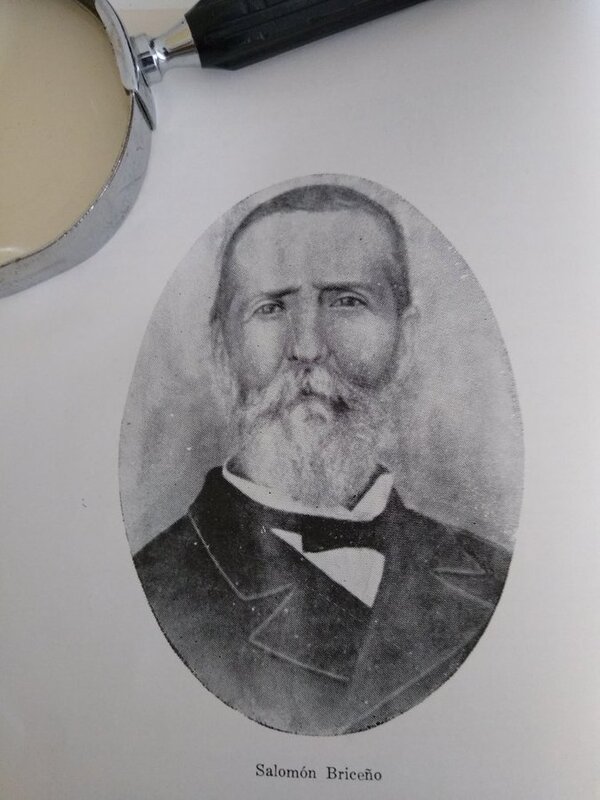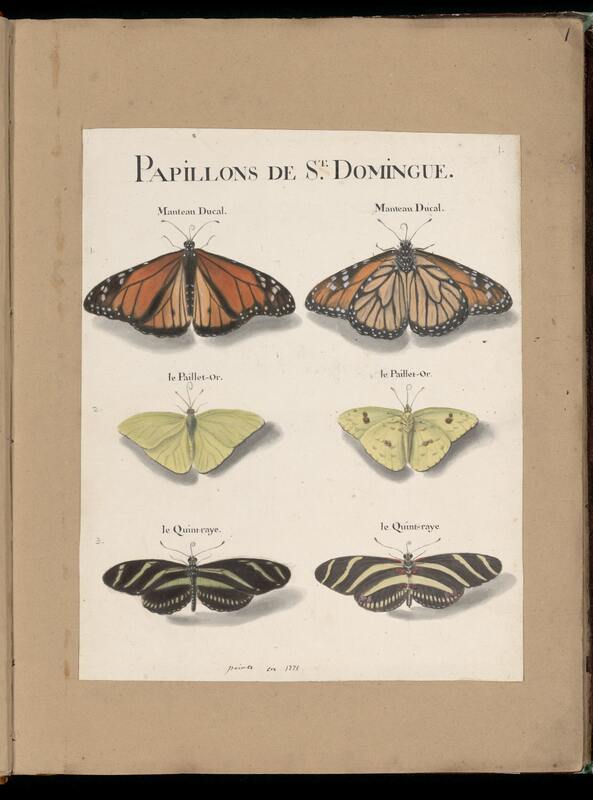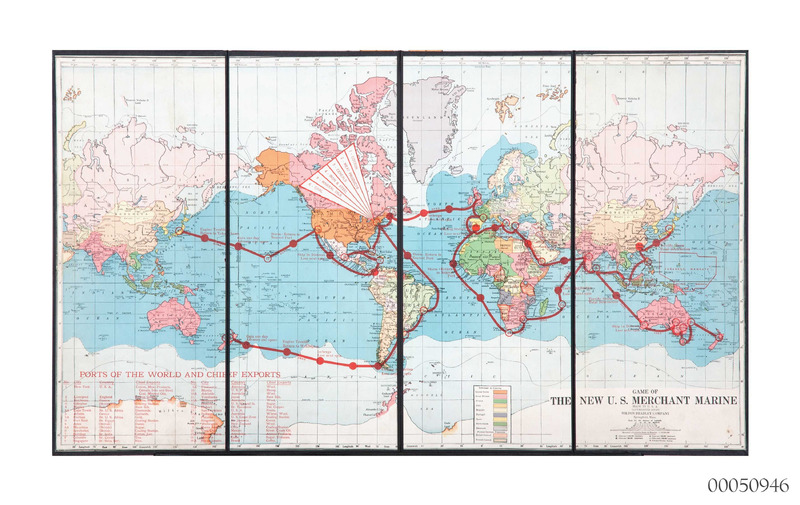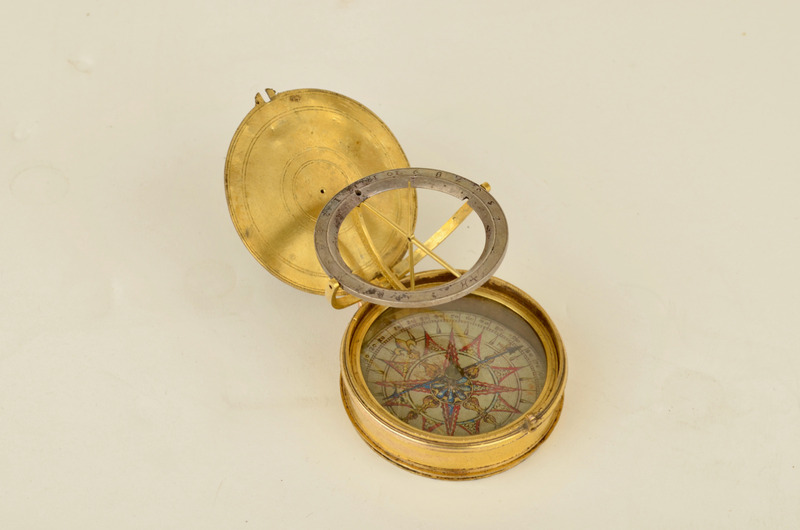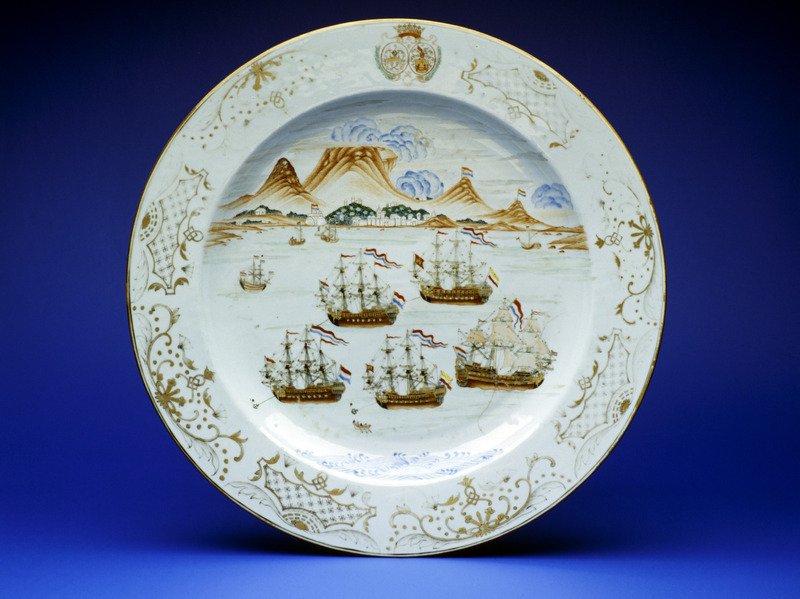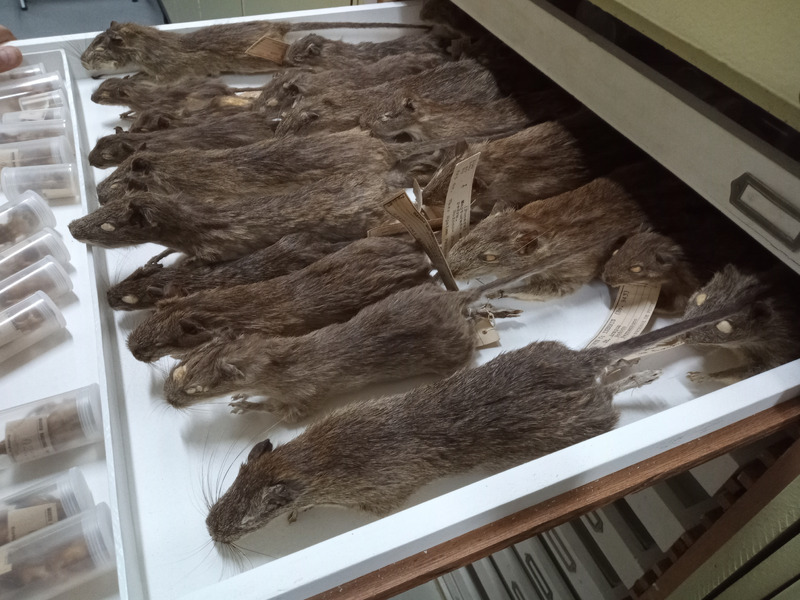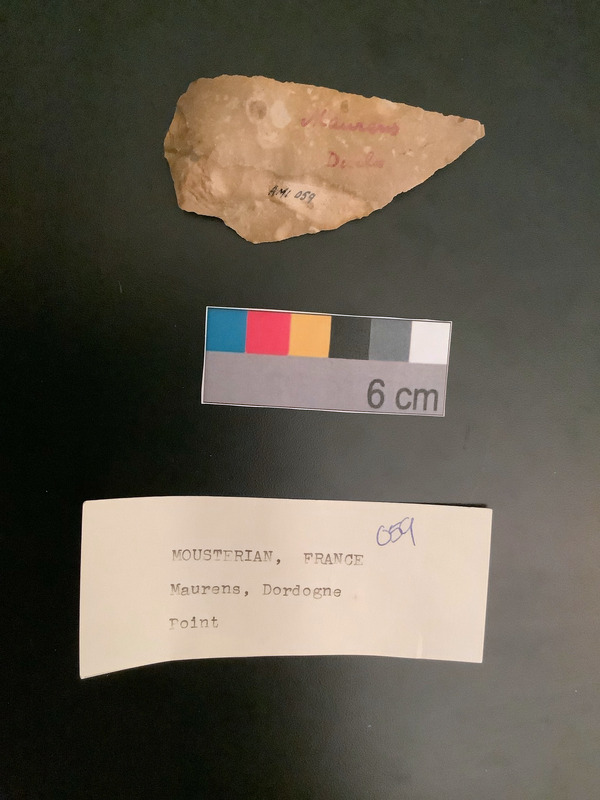Items
Tag
Culture
-
Camp of the Chorographic Commission in Yarumito, Colombia.This watercolor was created by Venezuelan Carmelo Fernández (1809–87), one of the three official draftsmen and painters of the Chorographic Commission, an ambitious Colombian enterprise to map the country, including its mineral resources, between 1850 and 1859. The Commission was led by the Italian born Agustín Codazzi (1793–1859), who involved members of his family: his wife Araceli de la Hoz served as de facto quartermaster, chief logistician, and hostess, while his daughter Constanza and her siblings assisted with reproducing maps. His sons Domingo and Lorenzo also participated in the group’s explorations. The Commission counted on interpreters, porters, muleteers, peons, baqueanos, all led by the butler José Domingo Carrasquel. The watercolor shows a character with a spyglass, presumably a naturalist, and the daily life of the camp, where it was necessary to cook, care for horses and mules, organize samples, notes and reports, as well as pitch and repair tents. Observations were not made in a vacuum, requiring numerous assistants, go-betweens, and wider support networks to make it possible to look, interpret, measure, and collect.
-
Lunario de un sigloBuenaventura Suárez (1679-1750), a Jesuit from Santa Fé (in present-day Argentina), spent most of his life as a missionary in the Río de la Plata Basin, where he composed these lunar ephemerides, published in Lisbon in 1748. This specific copy is a poignant reflection of the social structure within what would become the largest Jesuit mission in history, ultimately destroyed during the Guaraní Wars in the mid-18th century. Returning to South America, initially the copy belonged to Suárez himself, and later it was owned by Juan Sixto Mbiti, the Guaraní deputy "corregidor" of the village of San Lorenzo Mártir, in what is now Brazil. Besides having been written in Paraguay, printed in Lisbon, sent back to the author, and finally passing into the hands of a Guaraní official—knowledge in circulation in a most literal sense—the book includes a century-long lunar calendar and eclipse canon, along with the longitude differences between various major cities worldwide and the small locality of San Cosme, which effectively becomes the "center" of the world.
-
Foto de Salomón Briceño Gabaldón (1829-1912), taxidermist in Mérida, VenezuelaSalomón Briceño Gabaldón (1829-1912) es un excelente ejemplo de una especie de "centro de conexiones científicas". Aprendió taxidermia directamente del propio pintor, naturalista, viajero y taxidermista alemán Christian Anton Göring (1836-1905). A su vez, Göring había aprendido el oficio de su padre, en Alemania. Christian Antón llegó a Venezuela en 1866, y en 1869 llegó a Mérida, donde permaneció un tiempo, y conoció a Briceño Gabaldón. Este último llegó a ser tan competente en la profesión que envió ejemplares durante más de 20 años a museos de Europa y Estados Unidos. Además, Briceño Gabaldón enseñó el oficio a un hijo y una hija, que continuaron su tarea de colecta, taxidermia y envío a colecciones, sobre todo europeas por varias décadas después de su muerte. Un nutrido grupo de sus especímenes fueron conocidos por primera vez para las ciencias gracias a sus envíos a los museos metropolitanos. En total, la familia Gabaldón preparó más de mil ejemplares durante más de 70 años ininterrumpidos, haciendo circular conocimiento sobre vertebrados de los Andes venezolanos entre Sudamérica, Norteamérica y Europa. Consideramos a la figura del personaje tan estimulante, y con una serie de ramificaciones y extensiones de su trabajo e influencia, que juzgamos necesario proponer la difusión de su fotografía, acompañada de esa breve reseña biográfica. Se tendría con él un ejemplo de un naturalista criollo, que sobresale en su arte, y es capaz de imponer nueva información a museos y centros de cálculo europeos y norteamericanos, realizando un labor titánica, en una época donde las condiciones de trabajo y procesamiento de esa muestras no eran precisamente fáciles. Además, formando a una generación de sucesores en el culto de su arte/oficio. Tratándose de solamente una foto de una única persona, se podría llegar a pensar que la información que ésta aporta al observador sea limitada. Por ello, ha hecho falta aportar información adicional, en forma de una breve introducción a su biografía y logros científicos y de trabajo, como la expuesta en la pregunta anterior.
-
Chinese celestial globeThese globes from 1830 reflect how global exchanges produced new objects of knowledge and how the places where science happened were transformed. Qi Yanhuai, an official from Suzhou, manufactured this globe to update the imperial star catalog called the Compendium of Computational and Observational Astronomy (1723) and its Supplement (1742), the result of efforts by Jesuit and Chinese astronomers. By the 1820s the data was judged to be out of date and consequently astronomers such as Qi Yanhuai and Zhang Zuonan conducted new observations. These globes, therefore, demonstrate how Chinese users applied such translated models for their own purposes. Moreover, these globes expanded the audience for who produced astronomical knowledge. During the 18th century, exchanges occurred primarily at the Imperial court with Jesuit missionaries and other go-betweens. Yet that knowledge was limited. Only a handful of libraries had access to such printed books or manuscripts. These celestial globes aimed to distribute this knowledge more broadly through a different media and experience. They simplified computation and allowed for most educated people to participate. One remarkable feature of these globes is that they also function as clockwork devices. Created by Chinese clockmakers, these mechanisms transferred a global technology into a useful system for Chinese officials and families. The clock reported hours and time according to the traditional system of timekeeping in China, rather than simply a wall decoration. Moreover, since some globes included bells for hours of sunrise and sunset, the clocks could also be used as a practical device for bureaucratic needs to report those times to the city watch. More than just repurposing technology in a local context, Qi Yanhuai claimed that this feature was in fact what made them so useful as knowledge making devices. Although some conservatives viewed elaborate automata as wasteful and unnecessary or as appealing to base senses for popular audiences, Qi said that clockwork allowed one to check and evaluate celestial positions with just a single glance. They made calculations easier. “If your household has one, even your wife and children will be able to know the stars,” he said. Although clockwork connected this device to the world of entertainment, Qi suggested they were “Chinese instruments.”
-
The Saint Domingue AlbumsBetween 1766 and 1784, René Gabriel de Rabié, an engineer who worked in the French colony of Saint Domingue (now Haiti), painted over 320 watercolours of plants and animals. His natural history enterprise was aided by multiple collaborators including his daughter and grandson and numerous unnamed enslaved people who collected and prepared specimens, and assisted in their preservation and depiction. De Rabié identified his specimens using both French and Kréyol names, and provided observations of habitat, distribution and behaviours. His daughter and grandson added glosses to the works, which were bound in Paris in the mid-19th century. De Rabié was one of a number of French naturalists whose work informed the natural histories of Buffon and the scientists of the Jardin des plantes in Paris. The watercolours themselves survived the depredations of insects and the Caribbean climate, revolutions in Haiti and France, transatlantic crossings, and rejection by the Muséum d’histoire naturelle, to be offered for sale by a rare book dealer in England, where they were examined by a curator at the Smithsonian, and acquired in 1930 by Dr Casey Wood, founder of the Blacker Wood Natural History Collection at McGill University Library in Montreal. The Saint Domingue Albums are evidence of the intersection of European, Caribbean, and African ways of understanding the natural world. The survival of the watercolours in the albums speak to the importance accorded to the culture of natural history in the colonial French Caribbean. In collaboration with historians, artists, ornithologists, entomologists, and botanists in Canada, Haiti, the United States, Italy and France, de Rabié’s collection is becoming part of the global history of natural history. Thanks to partnerships with La Sociéte haïtienne d'histoire, de géographie et de géologie and Le Jardin botanique des Cayes (Haiti), it is becoming a resource for the study of Haiti’s history and environment, accessible in English, French and Kreyol.
-
The Game of the New U.S. Merchant MarineThis game was developed as part of the publicity campaigns to build the "shipmindedness" of the modern United States under the auspices of the U.S. Shipping Board. This civilian board oversaw the massive ship building program of 1917–20 to support the entry of the U.S. into WWI; after the Armistice it promoted a maritime vision of the modern world. Geographical and economic games were an established genre in the 19th and early 20th century. This game is noteworthy for its promotion of technological change and the modern conditions of shipping—it was the opposite of nostalgic visions of geographical exploration or the dangers and adventures of a sailor's life.
-
Pocket Compass Sundial, SpanishAs with all pocket sundials, this instrument is made for travel. It carries a compass needle so that it can be aligned north-south, and its outer casing is engraved with the latitudes of many major European cities so that its shadow-casting gnomon can be adjusted as its owner moves. The predominance of Iberian cities in the latitudes list, and the presence of Antwerp as one of the four cardinal cities of Europe, suggests that it is Spanish-made and pre-dates the protestant reformation of Antwerp in the late 1560s. A second set of evidence points to the instrument’s global travels. The underside of the dial’s case has been heavily modified by a second artisan sometime after its original manufacture. A second set of city latitudes has been added, in a less assured hand. Remarkably, all of these cities are in the ‘New World’, and include both major Caribbean, Central, and South American cities (Havana; Mexico City; Lima; Quito), as well as many smaller and more obscure cities from across the north and west of the continent. Research links many of these cities to Spanish mining concerns; and so the dial appears to have been modified for use by a Spanish conquistador. Because this second latitude list cannot be matched to any known atlases or geographical texts in Spain, it is plausible that these modifications were made by an artisan working in Central or South America.
-
William Fehr CollectionThis plate, produced specifically for the Cape in Canton around the 1740s, stands out conspicuously among the William Fehr collection, inviting us to explore a largely forgotten, centuries-long connection between colonial southern Africa and the Chinese cultural world. The plate’s Cantonese painters participated in the messy transoceanic chains of production that shaped such ‘entangled objects’. They interpreted an African environment, sketched by Dutch illustrators, through the lens of Chinese expectations of elite European consumers’ tastes. The plate exemplifies Giorgio Riello’s observation that material culture can help re-articulate ‘our spatial understanding of the past in ways that are not necessarily apparent in documentary sources’. It depicts Cape Town’s iconic landscape as seen from a Table Bay littered with Dutch ships, combining several seemingly unrelated visual cultures. For example, the ‘tablecloth’ covering Table Mountain – the feature after which the Khoekhoe named the place ǁHui ǃGaeb (‘the place where the clouds meet’) – is portrayed as Chinese xiangyun (‘auspicious clouds’) over a shanshui (‘mountain and water’) scene, while the sea and sky resemble washed-out European watercolours. The scene is framed by laub-und-bandelwerk in gold and black, which was characteristic of Viennese porcelain in the 1730s, itself inspired by French Baroque aesthetics, and topped with unidentified arms.
-
Taxidermized punarés (Thricodomys aperoides)These rodents were collected in the northeast of Brazil and sent to the National Museum, in Rio de Janeiro, where they were studied alongside other animals as part of research into disease ecology. Studying rodents like the punarés was essential for understanding the endemicity of infectious diseases in Brazil and, more broadly, in South America in the 1950s. Capturing and taxidermizing these animals involved many people, spanning from hunters and peasants to doctors and naturalists, each with distinct skills and knowledge. Most of these actors were Brazilians, but South American experts from Chili and Argentina were also involved in some of these activities. As is common in the study of ecology, scholars had to rely on rural communities and their deep knowledge of local fauna.
-
"Aloes in Monkey Skin"These two items from the Kew Economic Botany Collection show the ways in which aloes were packaged for international trade. Comparing the two distinct methods used to collect, prepare, and transport these specimens demonstrates how the international drugs trade was shaped by African and Native American technologies. Medicinal “aloes” are made from the leaf gel of several different species of the plant. The drug is a black colour and looks rather like the resin of a tree. The first image (Cat. no. 36522) shows Aloe perryi from Socotra, a small island off the coast of Yemen. These aloes were considered the best for medicinal use from at least the 1st century until the 19th century. The second image (Cat. No 36520) shows aloes from the Caribbean. These aloes come from the plant now known as Aloe vera. Both these types of aloe circulated internationally, but their packaging reflects the specific technologies and environments of the places where they were produced. In Socotra, the method of making aloes involved draining the leaf sap into a monkey skin. The sap was left to harden in the sun and then packaged in the same skin for export. Although these aloes come from Socotra, they were sold to traders from western India and marketed internationally from there. This explains the reference to the “East Indies” on the label. In the Caribbean between the 17th and 19th centuries, aloes were exported in gourds, and as such were often known as “gourd aloes”. In both Africa and the Americas, the gourd is used as a container also known as a calabash. In Mexico, it was used to contain pulque, the fermented juice of the agave plant. It was the confusion between agave (also called Aloe americana) and aloe that originally gave rise to the name Aloe vera.
-
Ami Stone Tool CollectionsHenri-Marc Ami made his career at the Canada geological survey, where he became convinced that all humans descended from Neanderthals. In the 1930s he created the Canadian School of Prehistoric Archeology in France and started collecting literally tons of prehistoric stone tools, notably at Combe-Capelle, at a time where no law limited the exportation of prehistoric artifacts. Ami's goal was to create collections for most Canadian university to train future archeologists. The collection speaks to the ethical issues that follow the belief in a shared human history when it comes to the collection and circulation of artifacts, notably with respect to the role it gives to Indigenous populations in human evolution and the role museums play today in the preservation of these collections that were acquired “far away from home”. Some of the tools are marked with labels indicating where they were collected. They are stored in a box along with a letter that indicates how the collection arrived at King’s College from the National Museum, after Ami's death.
-
Watanabe "Type No. 21" Side View ArthroscopeThe arthroscope is a surgical instrument that permits the optical inspection of the knee. It was first developed in Japan in the 1950s by a group led by Dr. Masaki Watanabe at Tokyo Teishin Hospital, an institution dedicated to the care of Japanese postal workers and their relatives. It has been suggested that the diagnosis and treatment of knee arthritis received particular attention in Japan due to the cultural importance of the seiza kneeling posture. This particular instrument was among the first practical arthroscopes in commercial production. During its rapid adoption over the 1960s and 1970s, the arthroscope evolved from a diagnostic instrument into the central component of an increasingly effective system for keyhole surgery that drastically improved outcomes and decrease healing time for knee joint surgery. Japan in this period was known for the quality of its optical equipment, especially cameras. This instrument can be fitted to a 1/2 frame 35mm Olympus Pen film Camera. An Atlas of Arthroscopy, first published by Watanabe and collaborators in 1959, helped to spread the technique through excellent colour photos taken using the device. However, Watanabe’s contribution was initially underplayed by the international orthopedic community. Robert W. Jackson, who interned with Dr. Watanabe in Japan in 1964–65, is often credited as having introduced the instrument into the orthopaedic practice, in part through trials done at Toronto General Hospital in 1966. This artifact is one of several from his collection. As the popularity of arthroscopy grew, various international manufactures of surgical instruments, especially those already manufacturing endoscopes, took over the market. The manufacture of precision optical instruments for surgery is now largely based in Germany.

